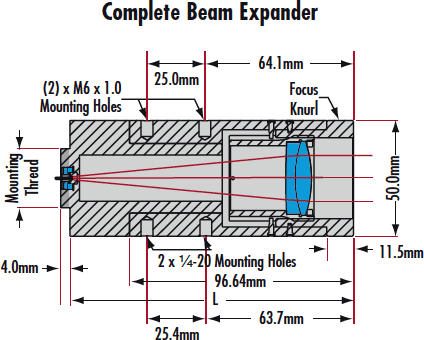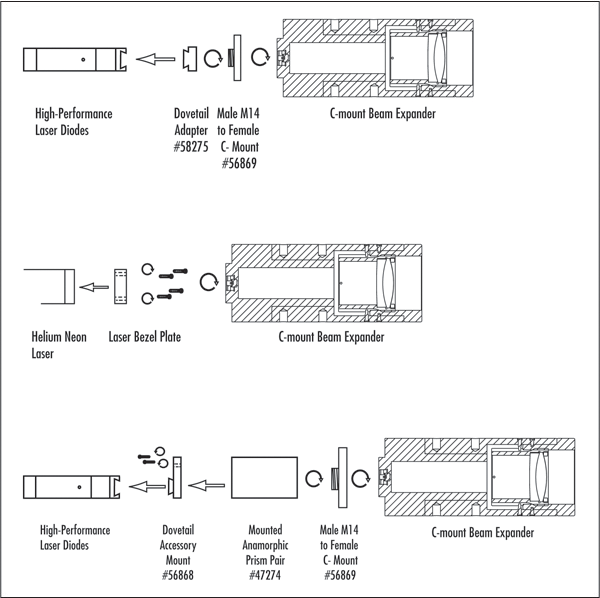
 TECHSPEC® components are designed, specified, or manufactured by Edmund Optics. Learn More
TECHSPEC® components are designed, specified, or manufactured by Edmund Optics. Learn More
| Volume Pricing | |
|---|---|
| Qty 1-4 | €504,70 each |
| Qty 5-24 | €442,90 each |
| Qty 25-99 | €396,55 each |
| Need More? | Request Quote |
TECHSPEC® Arcturus® HeNe Beam Expanders offer high performance optical designs packaged in a precise opto-mechanical platform. Two full rotations of the adjustment knurl provide smooth movement for the optics in order to vary the output from collimated to the minimum focus distance of 1.2 meters. The precise adjustment mechanism keeps optics from rotating, which helps maintain bore sight accuracy and a minimally aberrated beam. Adjustment lock secures position. TECHSPEC® Arcturus® HeNe Beam Expanders are easily secured to both metric and English threaded mounts. Four tapped holes (two M6 on 25mm centers and two ¼-20 on 1" centers) are located near the middle of the assembly for mounting.
For more cost sensitive applications, Edmund Optics also offers TECHSPEC Scorpii® Nd:YAG Beam Expanders. For applications where rotating optics are acceptable, the TECHSPEC Vega® Laser Line Beam Expanders and TECHSPEC Vega® Broadband Beam Expanders are available. For higher precision applications where sliding optics are necessary, please see our TECHSPEC Draconis® Nd:YAG Laser Line Beam Expanders or TECHSPEC Draconis® Broadband Beam Expanders. For broadband or ultrafast applications, TECHSPEC Canopus® Reflective Beam Expanders are available.

Beam Expander Mounting Configurations.Click on an item below to be brought to that item's product page.  |
or view regional numbers
QUOTE TOOL
enter stock numbers to begin
Copyright 2023 | Edmund Optics, Ltd Unit 1, Opus Avenue, Nether Poppleton, York, YO26 6BL, UK
California Consumer Privacy Acts (CCPA): Do Not Sell or Share My Personal Information
California Transparency in Supply Chains Act
The FUTURE Depends On Optics®